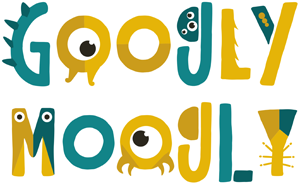Somehow over the years, the emphasis on play for adults has fallen to the wayside and I don’t know about you, I don’t want to be a dull boy.
It’s not just about being dull though, it’s about losing the stimulants from play that you grew up with.
Here are six patterns of play as researched by the National Institute for Play. You’ll find their definitions followed by our perspective on why that form of play is relevant to adults through the use of improvisation.
Object Play
“Curiosity about and playing with “objects” is a pervasive innately fun pattern of play…toys take on highly personalized characteristics, and as skills in manipulating objects (i.e., banging on pans, skipping rocks, etc.) develop, the richer become the circuits in the brain.”
You will hear improvisers talking about “object work” which refers to the skills used in scenes to mime the use of every day objects and activities. One way we go about refining our technique is by spending time really analyzing, holding, and using different objects. Then we practice without actually using the object. You can include this technique at work by carrying some objects/toys for your team to play with in meetings. From LEGO and ZOLO to Mister Potato Head, having these items available for people to putz around with during meetings activates people’s brains 80%.
Social Play
“From the simplest romp and wrestling of young animals to the most jocular and complex banter of close friends, social play is a key aspect of play behavior.”
In our arsenal of improv games, there are a number of physical exercises that push individuals out of their head and into their bodies. Some of you may be familiar with the human knot where players grab hands from across the circle, each hand with a different person, then the object is to untwist and unwind the “knot” without letting go. There are lots of moves and turns, laughs and agitations, but it’s definitely a form of social play that requires you to be psychical and work together.
Imaginative and Pretend Play
“The ability to create your own sense of mind, and that of others, remains key to innovation and creativity.”
Throughout the process of improvising, we rely on our imagination to bring us to pretend places with pretend people in pretend situations. Studies by the National Institute for Play show that without the use of this form of play, issues with coping skills and trust develop. Are you noticing some issues with your team around these areas? Perhaps it’s time to figure out a natural way to start adding elements of imaginative play into your routine.
Storytelling-Narrative Play
“Making sense of the world, its parts and one’s particular place in it is a central aspect of early development. And as we grow, the constancy of stories that enliven and help us understand ourselves and others, from a parent’s telling how it was when they were young, to media-driven stories like Big Bird’s rants; all involve us in a never ending fun-giving experience.”
In each improv show, our players work together to create a world line-by-line without any worry about plot or how scenes will end. When working with teams, there are a number of exercises we use to pull stories out of individuals starting with simple words all the way to line-by-line stories. In addition to exercises, many long-form improv teams use a “form of improv” in order to string their series of scenes together in a way that helps paint a cohesive story.
Creative Play
We can access fantasy-play to transcend the reality of our ordinary lives, and in the process germinate new ideas, and shape and re-shape them. Given enriched circumstances, and access to novelty, our play drive takes us into these realms spontaneously.
Make bold choices. That’s something we say a lot. Whether you’re improvising in a scene or brainstorming in the workplace, it’s important that we encourage the sharing of ideas that are new or maybe go against the grain. It may shape itself into something truly memorable.
Have a lookout for these types of play around you. Are you actively engaging with individuals in ways that fulfill some of these types of play? If not, perhaps it’s time to try and try something new that adds a bit of sparkle to your day.





